Holsinger’s Charlottesville
Rufus W. Holsinger moved to Charlottesville from Pennsylvania in the late 1880s and spent the next 40 years as the area’s photographer of record, chronicling the area and its people. He covered everything from the fire that destroyed the Rotunda to celebrations marking the end of World War I. His nearly 10,000 surviving photographs are stored in the Albert and Shirley Small Special Collections Library at UVA, which has made the collection among its first contributions to the Digital Public Library of America, an effort to link the nation’s libraries, archives and museums into one digital hub. After Holsinger’s death in 1930, his son Ralph took charge of the studio and ran it until his retirement nearly 40 years later. Below is a sampling of some of Rufus Holsinger’s photographs of Charlottesville and UVA.
Photo captions come from the book, Holsinger’s Charlottesville: A Collection of Photographs by Rufus W. Holsinger, by Cecile Wendover Clover and F.T. Heblich Jr.
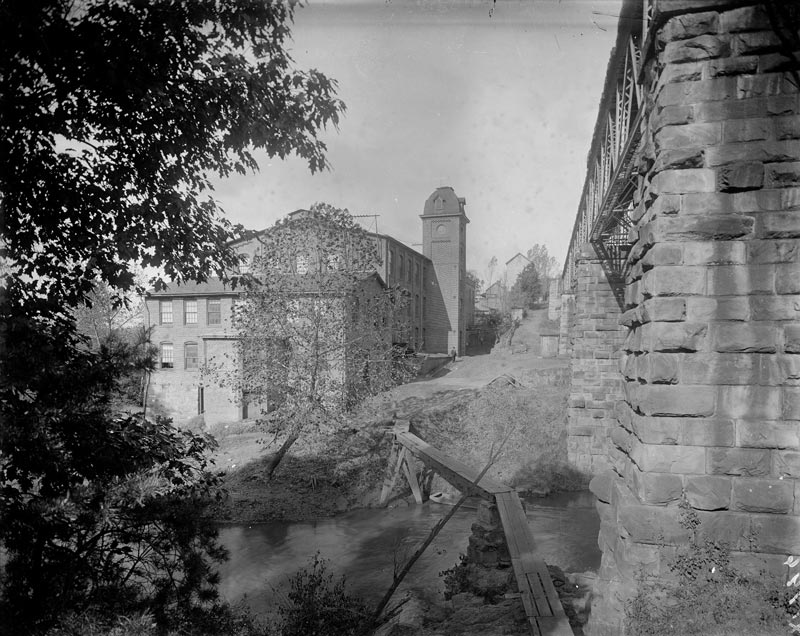
Charlottesville Woolen Mills was one of the area’s largest employers in the late 19th and early 20th centuries. It manufactured uniforms for the confederacy and later for municipal employees and railroad workers. The mill closed its doors in the early 1960s and many of the buildings were subsequently razed.

The Monticello Hotel was built beginning in 1925 and became one of the most popular hotels in Charlottesville. What was said to be one of the most powerful beacons in the world was installed on the roof of the building in 1927. The light could reportedly be seen 200 miles away and it was often trained on Monticello at night. The building was renovated into apartments in the 1970s.
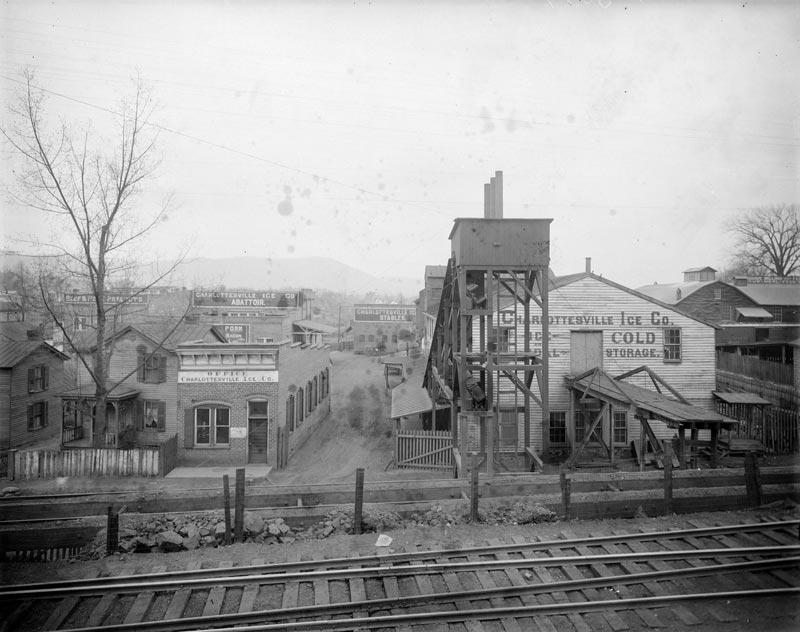
This 1915 photograph shows the campus of Charlottesville Ice Company, which was located between Water and Garrett Streets, a block over from where the Downtown Mall is located today. Jutting out from the cold storage building on the right is a conveyor belt that carried ice to train cars transporting produce. Behind and to the left was the company’s abattoir, where animals were slaughtered and dressed and chitlins, scrapple and lard were made. To the right was the stable building, which housed the horses that pulled the ice wagons. The area was razed in 1973 as part of a redevelopment project.
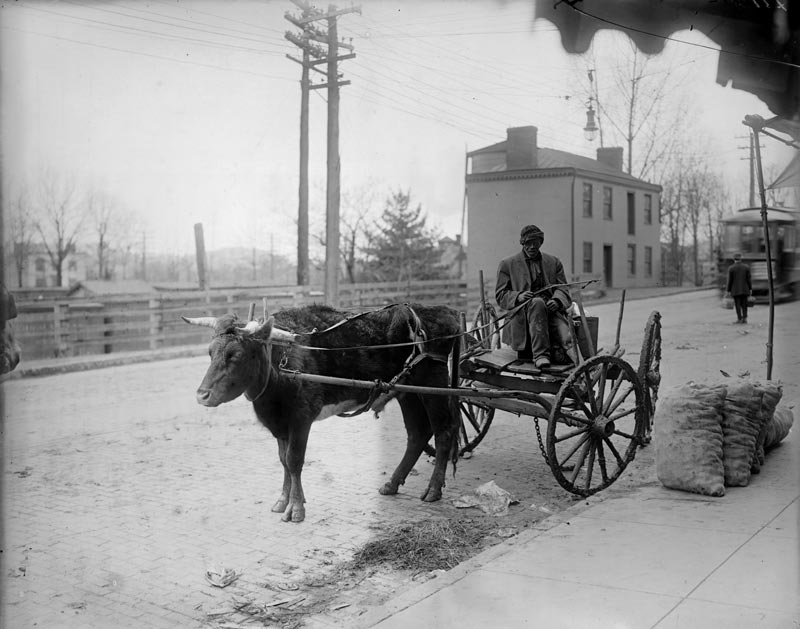
County roads were unpaved when this photo was taken in March 1913, and many of those living outside the city relied on ox, not horses or mules, to pull their carts through the muddy roads to get to town. The driver pictured here has brought potatoes to town to sell, in what appears to be a handmade cart. He is parked in front of Holsinger’s studio on Main Street. Behind him sits the trainmasters office of Southern Railway.
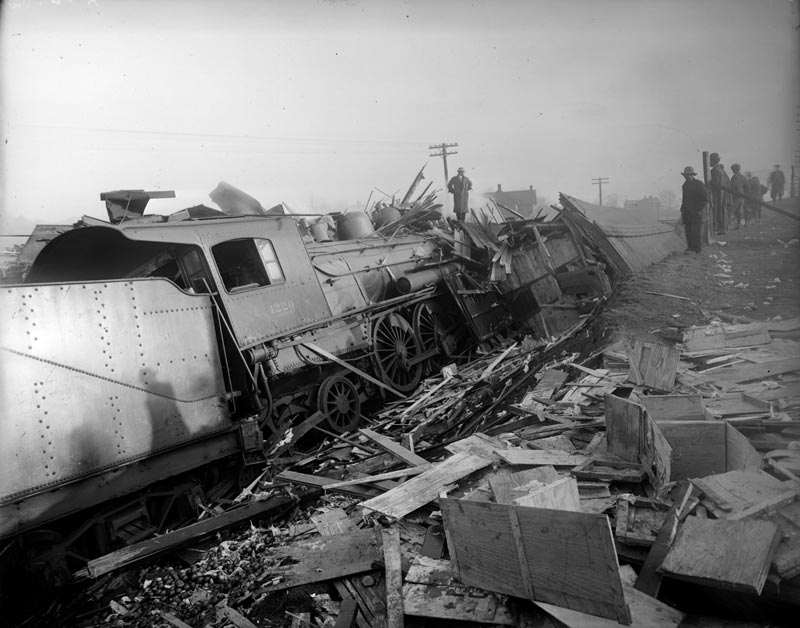
On Dec. 3, 1912, a passenger train collided with a freight train in the lower end of the Southern Railway yards. There were no injuries, but three freight cars loaded with oranges were destroyed. According to the Daily Progress, “many (people) seemed to forget that the oranges belonged to the railway company and carried off a quantity of fruit.” The wreck was cleared by evening.
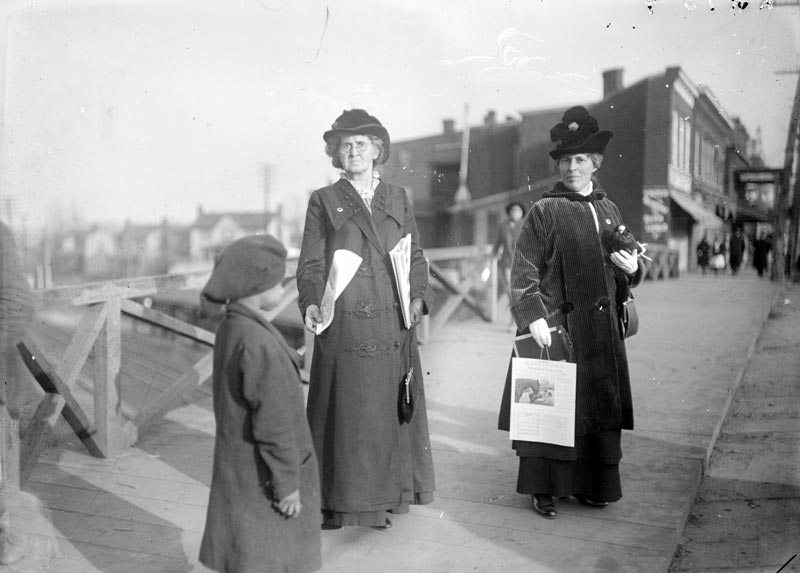
These women are shown distributing newsletters of the American Humane Educational Society on the West Main Street railway bridge in 1915. The group maintained pet shelters and lobbied for passage of laws to protect children and animals.
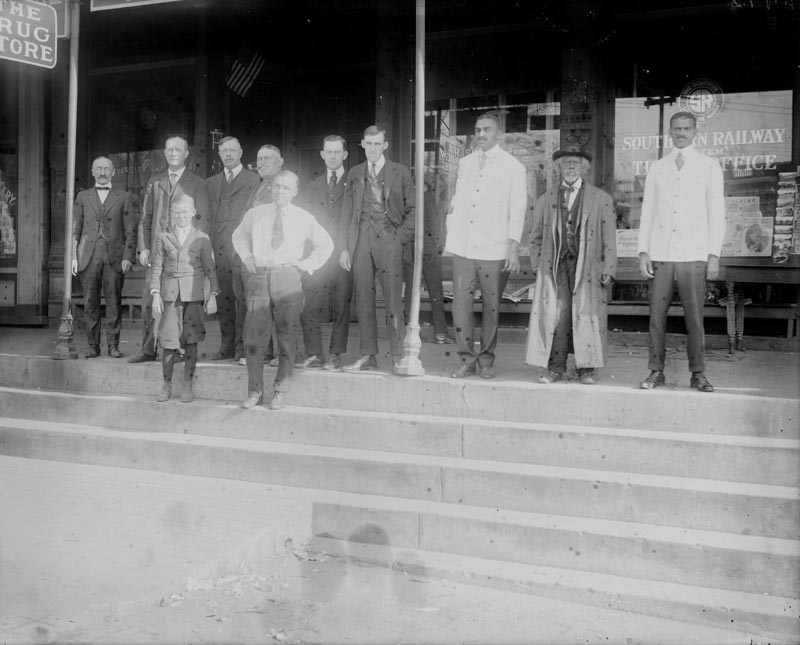
This 1917 photograph shows several merchants of the Corner posing in front of what was then Anderson Brothers Bookstore. Standing in white coats are Charlie and William Brown, who operated a barbershop under the University Billiard Parlor. Between them is Henry Martin, the bell ringer for UVA.
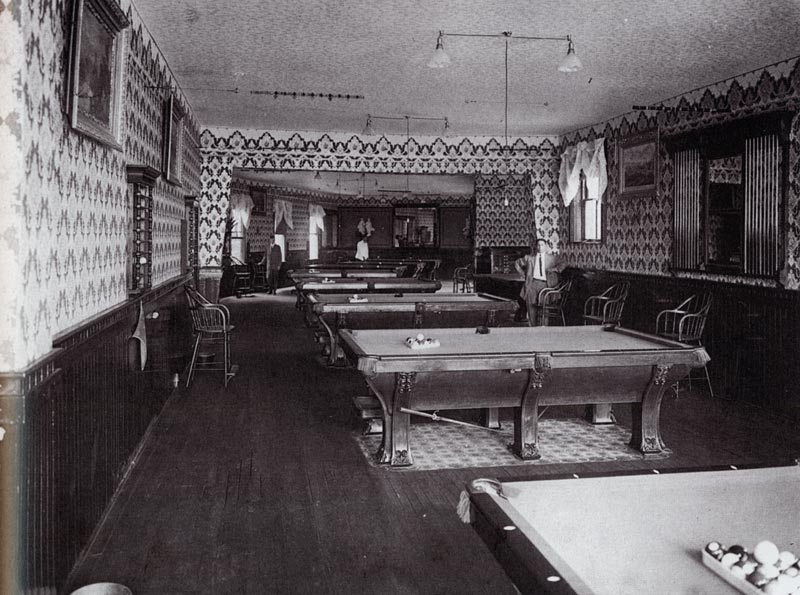
The University Billiard Parlor was located on the Corner where the Freemen-Victorius framing shop is located today. The owner, John LaRowe, is showing leaning against a chair rail in 1912. LaRowe was a boxing instructor at UVA for nearly 20 years. He later moved the pool hall to another location behind the Corner, where it was considered to be the largest pool hall in the South at the time.
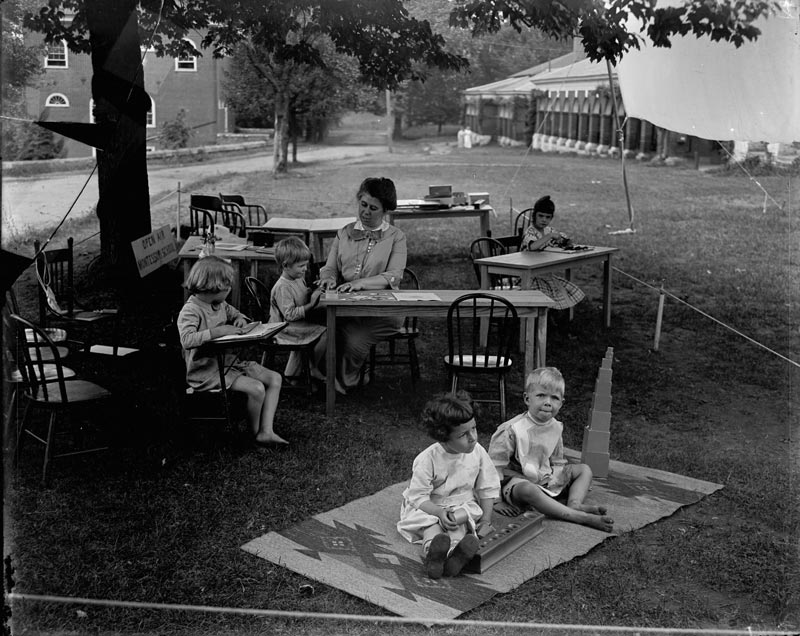
A Montessori school for children was established on the West Range of Grounds sometime in the early part of the 20th century. The building on the left is the old medical building and anatomical theater.
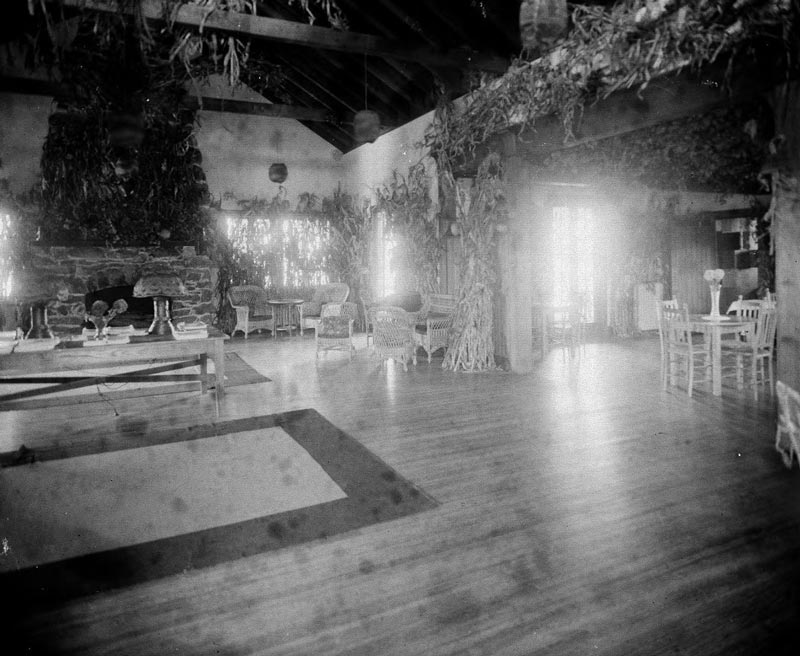
This photograph, circa 1917, shows the interior of Charlotteville’s first country club off of Rugby Road. It became a private residence in the mid-1930s, and in 1948 was purchased by the Chi Psi fraternity. Chi Psi had the first housemother of any University fraternity.
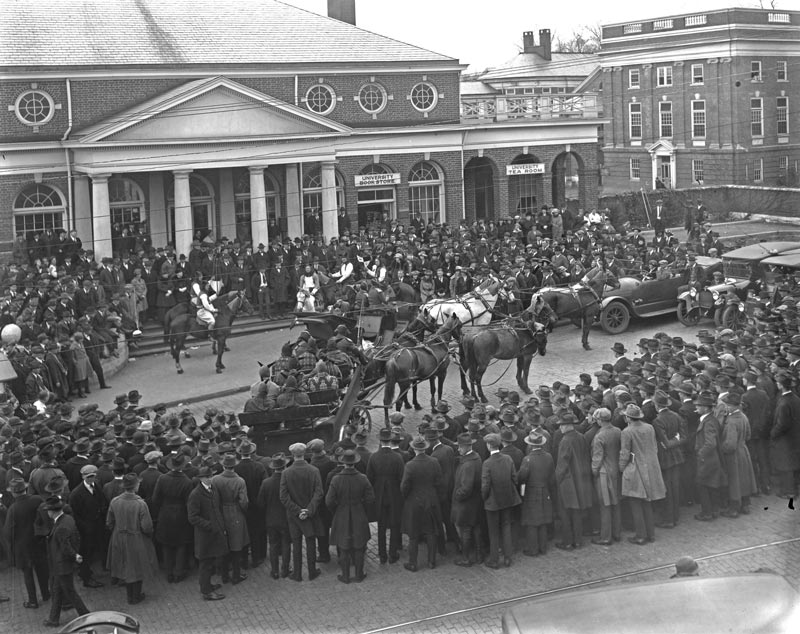
A UVA IMP Society parade in 1925 on the Corner, in front of what is now the Women’s Center
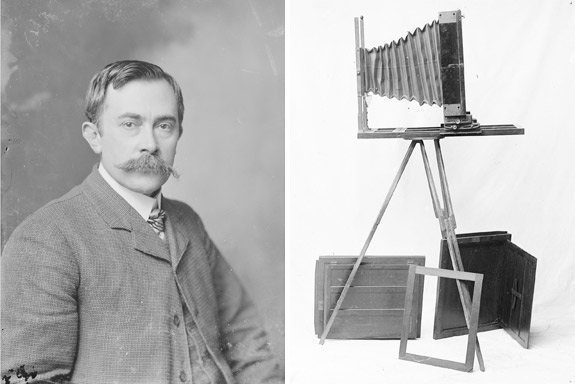
The method by which Holsinger made most of his photographs was an extremely cumbersome process known as the wet plate method. He began with an ordinary plate of glass usually eight to 10 inches in size ... Under conditions of extremely low light illumination, he spread onto the plate a mixture containing potassium iodine called ‘collodion.’ After this, he dipped the plate into a solution of one part silver nitrate to twelve parts water. The plate stayed in this solution for approximately six to eight minutes after which into a light tight negative carrier. Then while the negative was still wet, the plate was put into the camera and the negative exposed ... Once the wet plate had been made, a new challenge awaited him when he actually took the picture. To begin with, the bulkiness of the camera that could accommodate an eight by ten inch negative was considerable, and the system by which the subject was viewed was confusing, for the image that was seen through the lens of the camera was upside-down and backwards.
Photos courtesy of the University of Virginia Library. View the collection.